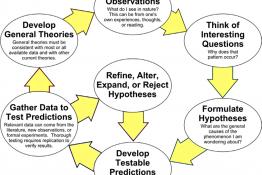Prions: protein rebels with a cause!
Issue 366 | Page 51 | Published Sep 2017
Description
Traditionally we consider infection to arise from viruses, bacteria and parasites. Prions are infectious proteins without any nucleic acids, and therefore do not represent living things. Despite this, they have the ability to replicate themselves and cause diseases such as mad cow disease (bovine spongiform encepthalopathy) and human Creutzfeldt Jakob disease (CJD). This article discusses how prions were first discovered and what has since been elucidated about their effects in various organisms. The mechanisms of protein misfolding in relation to prion biology are also examined.
More from this issue
The Scientific Method is the series of processes by which hypotheses, ideas and theories are shown to be true beyond a reasonable scientific doubt...
A vote with two candidates is simple the majority is clear. When there are more candidates, the vote is still clear if one receives more votes...
Natural products are ubiquitous in nature but do not form a large proportion of the A-level syllabuses in the UK. In this article we briefly...




